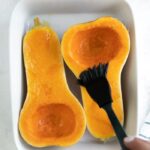Understanding the menstrual cycle is key to family planning and overall health awareness. A crucial part of this cycle is ovulation, the phase when an egg is released from the ovary, making pregnancy possible. But How Long Does Ovulation Last, and what does this mean for your fertility? Let’s delve into the details of ovulation within the menstrual cycle.
The menstrual cycle is a complex process generally divided into four phases: the follicular phase, ovulation, the luteal phase, and menses (menstruation). Each phase is governed by hormonal changes that prepare the body for potential pregnancy.
Ovulation: A Key Moment in the Menstrual Cycle
Ovulation is the release of a mature egg from the ovary. This event is triggered by a surge in luteinizing hormone (LH), which itself is prompted by high levels of estrogen produced during the follicular phase. Typically, ovulation occurs about 14 days before the start of your next menstrual period. For someone with a 28-day cycle, this would be around day 14. However, cycle lengths vary, and ovulation timing can shift accordingly. Day 1 of the menstrual cycle is always marked by the first day of menstruation.
So, how long does the egg release process itself take? The actual release of the egg from the ovary is a relatively short event. Ovulation, in the strictest sense, lasts only about 12 to 24 hours. This is the lifespan of the egg after it’s released. If the egg is not fertilized by sperm within this timeframe, it will begin to dissolve.
However, when people ask “how long does ovulation last,” they are often really interested in understanding their fertile window. The fertile window is the period during the menstrual cycle when pregnancy is possible. This window is longer than just the 12-24 hours of the egg’s lifespan because sperm can survive in the female reproductive tract for several days.
The Fertile Window: Extending Beyond Ovulation
While ovulation is brief, the fertile window is significantly longer, typically around six days. This includes the five days before ovulation and the day of ovulation itself. Here’s why:
- Sperm Survival: Sperm can survive for up to 5 days in the female reproductive tract under favorable conditions (cervical mucus that is thin and watery, which is present leading up to ovulation). Therefore, intercourse a few days before ovulation can still lead to fertilization.
- Egg Lifespan: As mentioned, the egg is viable for fertilization for approximately 12-24 hours after ovulation.
Therefore, to maximize the chances of conception, it’s important to understand and track your fertile window, not just the precise moment of ovulation.
Recognizing Ovulation and Your Fertile Window
Several signs can help you identify when you are ovulating and within your fertile window:
- Cervical Mucus Changes: As estrogen levels rise before ovulation, cervical mucus becomes more abundant, clear, and slippery, resembling egg whites. This type of mucus helps sperm travel to the egg.
- Basal Body Temperature (BBT) Tracking: Progesterone, which rises after ovulation, causes a slight increase in basal body temperature. Tracking your BBT can show a temperature rise after ovulation has occurred, helping you confirm ovulation retrospectively, but it’s less helpful for predicting ovulation in advance.
- Ovulation Predictor Kits (OPKs): These kits detect the LH surge in urine, which precedes ovulation by about 24-36 hours. OPKs are effective in predicting ovulation and identifying the most fertile days.
- Ovulation Pain (Mittelschmerz): Some women experience mild pain or cramping on one side of their lower abdomen during ovulation.
The Phases Following Ovulation
After ovulation, the menstrual cycle moves into the luteal phase. The ruptured follicle in the ovary becomes the corpus luteum and starts producing progesterone. Progesterone prepares the uterine lining for implantation of a fertilized egg. If pregnancy does not occur, the corpus luteum degrades, progesterone and estrogen levels drop, and the uterine lining sheds, leading to menstruation (menses) and the start of a new cycle.
In conclusion, while ovulation itself is a short event of 12-24 hours, understanding your fertile window, which spans about six days leading up to and including ovulation, is crucial for those trying to conceive or avoid pregnancy. By tracking your cycle and recognizing the signs of ovulation, you can gain valuable insights into your fertility.
